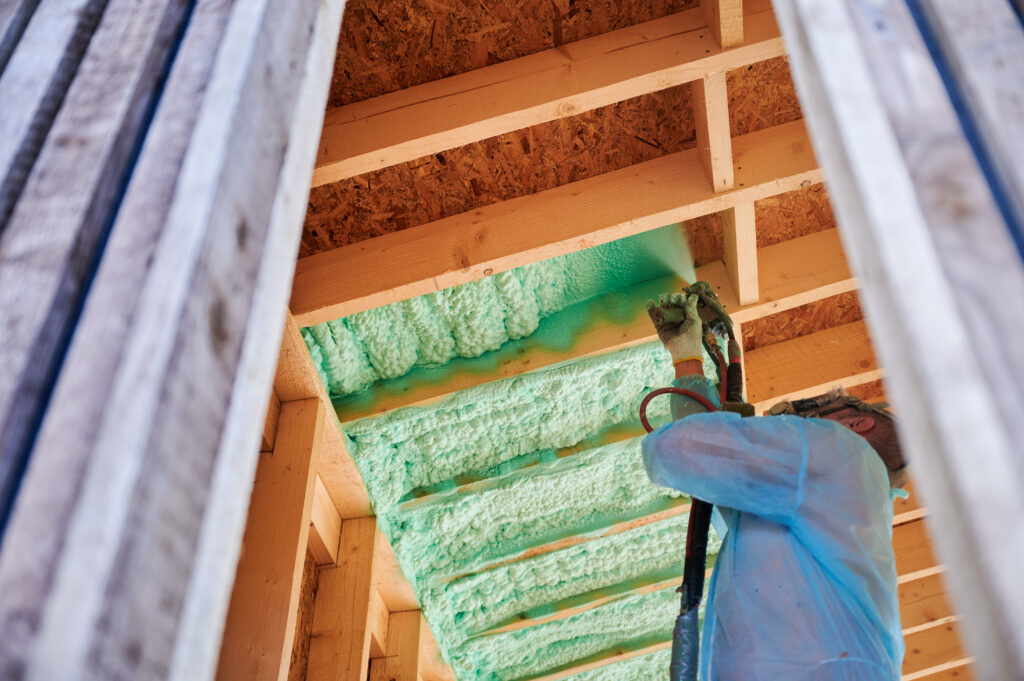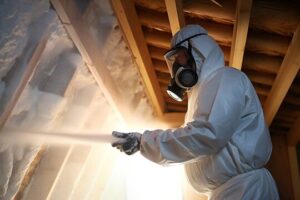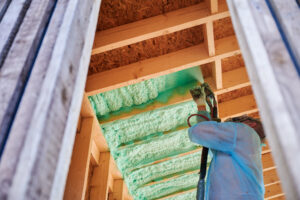When Texas Hill Country homeowners think about making their homes more energy efficient, insulation is usually the first thing that comes to mind — and for good reason. But there’s another critical factor that often gets overlooked: attic ventilation.
Insulation and ventilation may sound like opposites, but in reality, they’re partners. Together, they help regulate your home’s temperature, prevent costly damage, and cut your energy bills.
At Valley Thermal, we’ve seen firsthand how homes in Fredericksburg, Johnson City, Blanco, Boerne, Dripping Springs, Wimberley, and Canyon Lake benefit from having the right balance of attic insulation and ventilation. Let’s break down why both are essential — and how combining them can save you money year after year.
The Hill Country Climate Challenge
Our area’s climate poses unique challenges:
-
Hot Summers: Attic temps can soar above 140°F, making your AC work overtime.
-
Cool Winters: Without insulation, heat escapes through the roof.
-
Humidity: Trapped moisture can lead to mold, mildew, and wood rot.
Without the right ventilation + insulation combination, you risk higher utility bills, reduced comfort, and premature wear on your home.
What Insulation Does (and What It Doesn’t)
Insulation’s Role:
-
Creates a thermal barrier between your living space and the attic.
-
Keeps heat out in summer and in during winter.
-
Reduces the load on your HVAC system.
What Insulation Can’t Do Alone:
-
Remove moisture from your attic.
-
Prevent heat buildup from poor airflow.
-
Stop condensation-related mold growth.
What Attic Ventilation Does (and What It Doesn’t)
Ventilation’s Role:
-
Moves hot, stale air out of your attic.
-
Brings cooler, drier air in.
-
Reduces moisture that can damage insulation and rafters.
What Ventilation Can’t Do Alone:
-
Stop heat transfer into your living space without proper insulation.
-
Keep your home’s temperature stable during extreme weather.
Why They Work Best Together
Think of insulation as the blanket and ventilation as the breathing. Without one, the other can’t perform its job effectively:
-
With insulation but no ventilation: Heat and moisture get trapped, reducing insulation performance and lifespan.
-
With ventilation but no insulation: Air moves, but heat still penetrates your home, making your HVAC work harder.
When you have both, you get:
-
Lower energy bills
-
Better indoor comfort
-
Protection for your roof and attic structure
-
Extended HVAC life
Signs Your Attic Ventilation & Insulation Need an Upgrade
-
Uneven temperatures between rooms.
-
High summer electric bills despite running the AC constantly.
-
Ice dams or frost in the attic in winter (for rare cold snaps).
-
Mold or mildew smell in the attic.
-
Visible moisture or staining on rafters.
Types of Attic Ventilation Systems
At Valley Thermal, we recommend ventilation solutions based on your home’s size, roof design, and climate needs:
1. Ridge Vents
-
Installed along the roof peak.
-
Allow hot air to escape naturally.
-
Work best with soffit vents for airflow balance.
2. Soffit Vents
-
Located under roof eaves.
-
Bring in fresh air to replace hot attic air.
3. Gable Vents
-
Mounted on exterior walls near the roof peak.
-
Provide cross ventilation.
4. Powered Attic Fans
-
Electrically or solar-powered.
-
Actively pull hot air out for faster cooling.
Insulation Options That Work in the Hill Country
Blown-In Fiberglass
-
Affordable and effective for attics.
-
Excellent coverage in irregular spaces.
Spray Foam
-
Creates an air and moisture barrier.
-
High R-value per inch for maximum efficiency.
Batt Insulation
-
Best for standard joist spacing.
-
Works well when combined with other types.
Energy Savings in the Hill Country — Real Numbers
A Fredericksburg homeowner upgraded both attic insulation and ventilation with Valley Thermal:
-
Before: Attic temps reached 135°F in summer, AC ran nearly nonstop.
-
After: Attic temps dropped 25°F, monthly electric bills decreased by 20–25%.
The homeowner also reported fewer hot spots in the house and better comfort overall.
Common Myths About Insulation & Ventilation
Myth 1: “If I just add more insulation, my attic will be fine.”
Truth: Without ventilation, moisture buildup can ruin even the best insulation.
Myth 2: “Attic fans make my AC less effective.”
Truth: When installed properly, they reduce the attic heat load so your AC works more efficiently.
Myth 3: “Ventilation only matters in the summer.”
Truth: It also prevents winter condensation and extends roof life.
Valley Thermal’s 4-Step Process for Maximum Efficiency
-
Attic Inspection: Identify current R-value, airflow patterns, and moisture issues.
-
Custom Plan: Recommend the right insulation and ventilation combination for your home.
-
Professional Installation: We use industry-best materials and techniques.
-
Follow-Up: Post-install checks to ensure everything is performing as intended.
Why Choose Valley Thermal for Hill Country Homes
-
Local Expertise: We understand the specific climate challenges in Fredericksburg, Johnson City, Blanco, Boerne, Dripping Springs, Wimberley, and Canyon Lake.
-
Full-Service Approach: We handle both insulation and ventilation for total performance.
-
Energy Savings Focus: Our goal is to cut your bills, not just sell you a product.
-
Premium Materials: Long-lasting, high R-value, moisture-resistant.
Final Word
If you want lower energy bills, better comfort, and a healthier home, you can’t just focus on insulation — ventilation is the missing link. When these two work together, your attic becomes a shield against the Texas Hill Country’s heat and humidity.
📞 Call Valley Thermal today to schedule your free attic assessment and find out how the right insulation and ventilation can make your home more comfortable and energy efficient.





